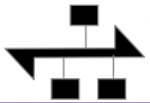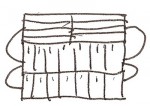Visitors to the Fibre Channel Industry Association (FCIA) booth at Storage Networking World in Orlando were greeted by a strange symbol, but what is the symbol exactly? I was amused to get some puzzled looks (and no correct answers) when I polled a number of industry insiders.
Gestalt IT
1000Base-What?
Networking may be straightforward, but the world of networking terminology is not. I’ve been steeped in the strange lingo of Ethernet for many years, but I still get confused by some of the terms. What’s the difference between 1000BASE-CX, 1000BASE-SX, and 1000BASE-T? In this post, I’m going to tackle this Ethernet network naming convention.
Where Is Microsoft’s FCoE Support?
The storage and networking industry is pushing for high-end Fibre Channel over Ethernet (FCoE), and its dominance of FCoE seems almost certain to many industry watchers. But where is Microsoft when it comes to FCoE? Put simply, Microsoft does not seem to be participating in FCoE development, either on the initiator or target side.
Multipath: Active/Passive, Dual Active, and Active/Active
Although it’s rare in the PC world, multipath I/O is not new in enterprise IT. I’ve been juggling paths to storage and networks as long as I’ve been a systems administrator, and that’s a bit longer than I care to admit. But the proliferation of technologies has made it difficult to understand path management. What’s the difference between “dual active” and “active/active”? Is “active/passive” really that bad?
How Did Microsoft and Intel Get 1 Million iSCSI IOPS?
Ever since Microsoft and Intel declared that the combination of Windows and Nehalem could deliver over a million iSCSI IOPS, I’ve been curious about just how they did it. What black magic could push that many I/Os over a single Ethernet connection? And what was on the other end? Now Intel has revealed all in a whitepaper, and the results are surprising!


